I’ve been excited to take my turn at the bars of the 2021 Harley-Davidson Pan America since first reading of H-D’s impending launch into the adventure (ADV) riding world. It certainly makes sense to me that America’s #1 motorcycle manufacturer would want to capitalize on the growth of the ADV riding segment, which women are eagerly exploring. But historically known for its air-cooled V-twin cruisers, did the Motor Company get it right?
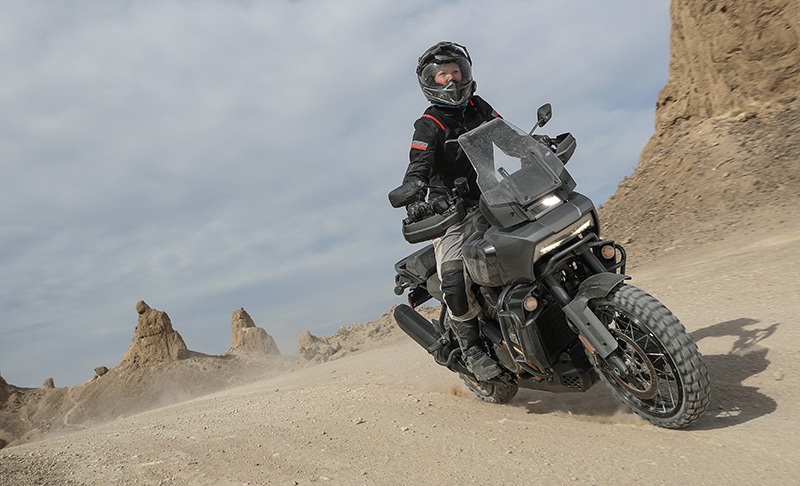
Harley clearly did its homework, spending more than four years studying the needs of the adventure riding segment: strong, powerful bikes that are comfortable for long distances on pavement and provide maneuverability, durability, and suspension capable of smoothing out rough off-road terrain.
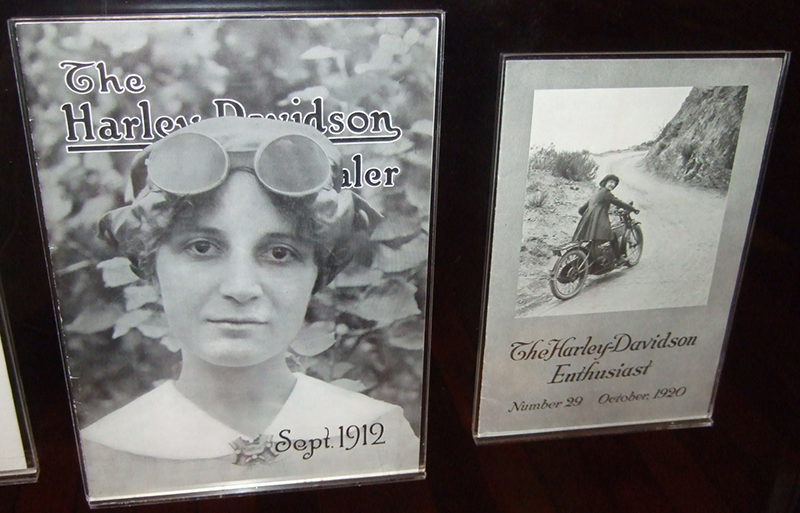
As a riding coach for one of the country’s leading motorcycle adventure tour and training programs, RawHyde Adventures, I was proud to be the only woman journalist in my group for the weekend’s launch. The irony also wasn’t lost on me when I arrived at RawHyde’s new Zakar facility in the Mojave Desert aboard my well-outfitted 2014 BMW R 1200 GS, the Pan America’s head-to-head German competitor. Like the BMW, the Pan America boasts a liquid-cooled 1250cc engine and sport touring creature comforts ranging from cruise control to heated grips to variable ride modes. But I quickly discovered the Pan America introduces some significant distinctions—namely its Adaptive Ride Height (ARH) option and its powerful new Revolution Max motor—that will help Harley carve its own path in the adventure riding segment.
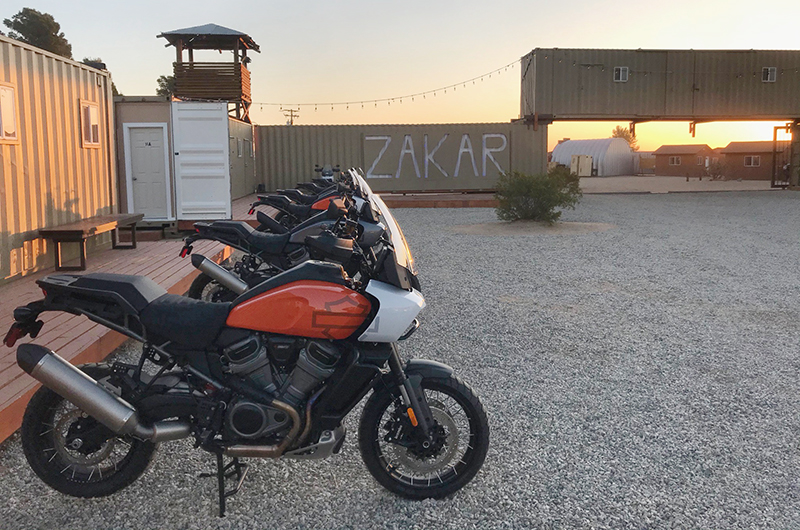
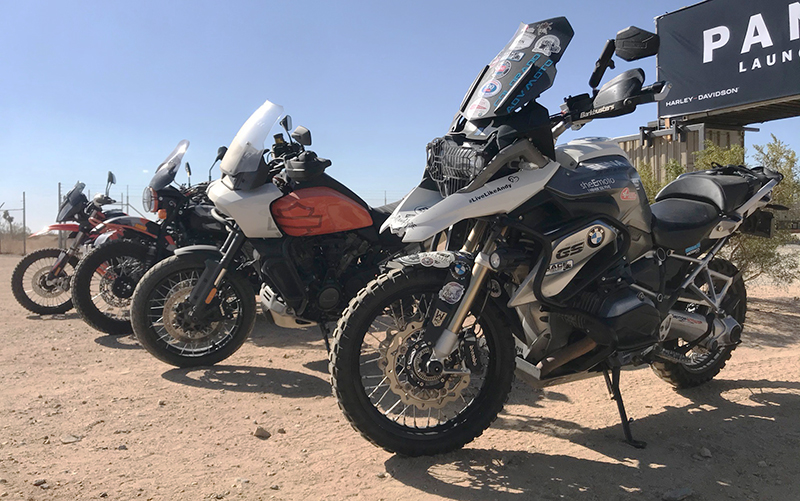
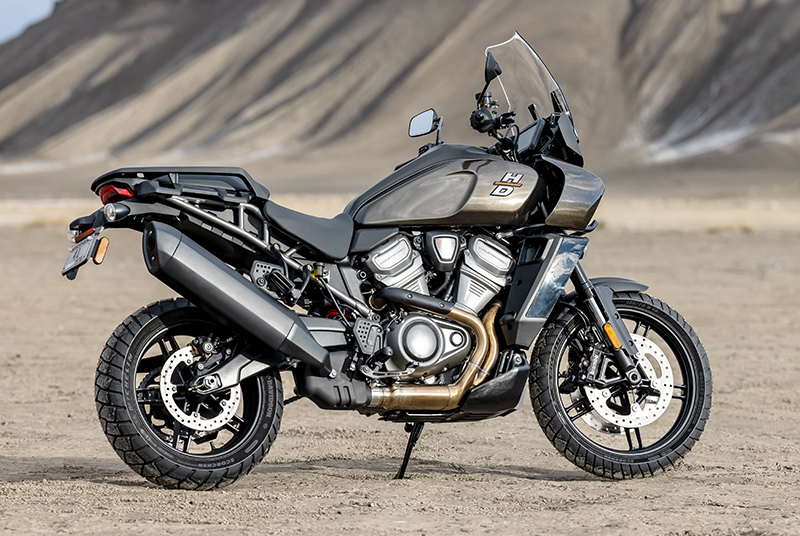
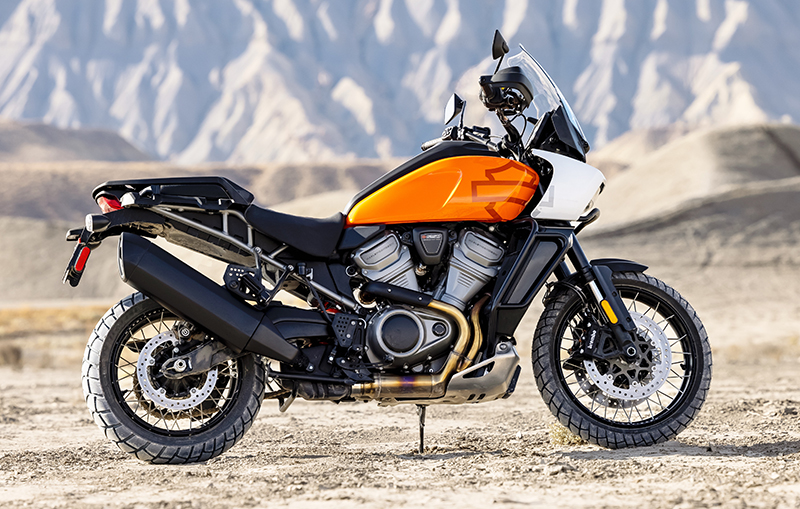
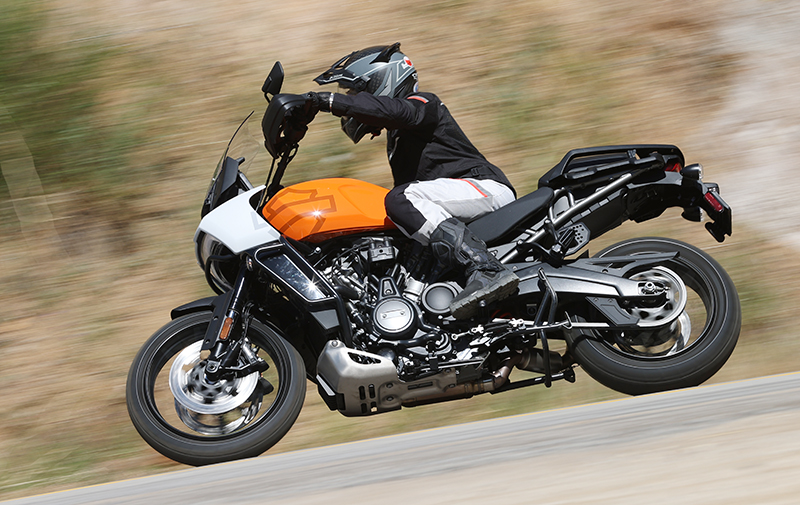
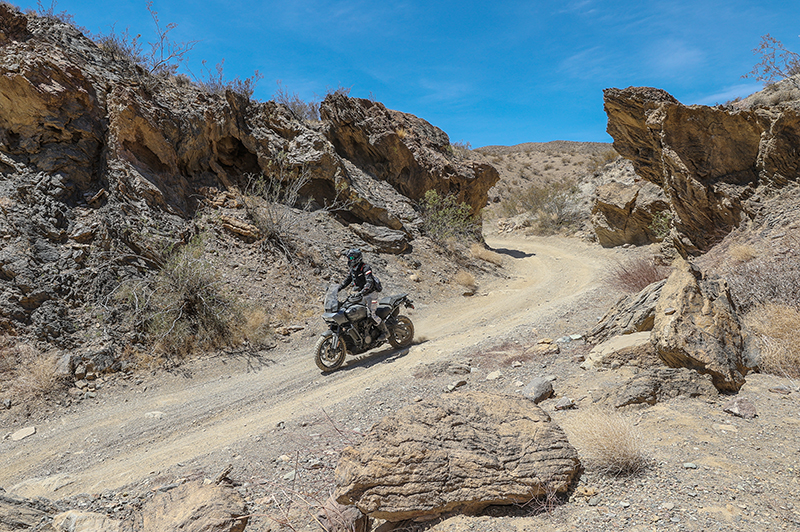
Ergonomics and Adjustability
Even before riding the Pan America it was clear that Harley-Davidson adopted some category-standard features to address the ergonomic challenges presented by adventure riding. With ADV riding, bikes need to be comfortable for the rider in both a seated position (for long distance touring) and a standing position (for off-road maneuverability.) The Pan America has a two-position rear brake lever, five-position clutch and front brake levers (helpful also for smaller hands), removable footpeg inserts, and a four-position windshield that’s easily adjusted manually using your left hand while underway. I found these adjustments made the transition from street to dirt and back a seamless one.
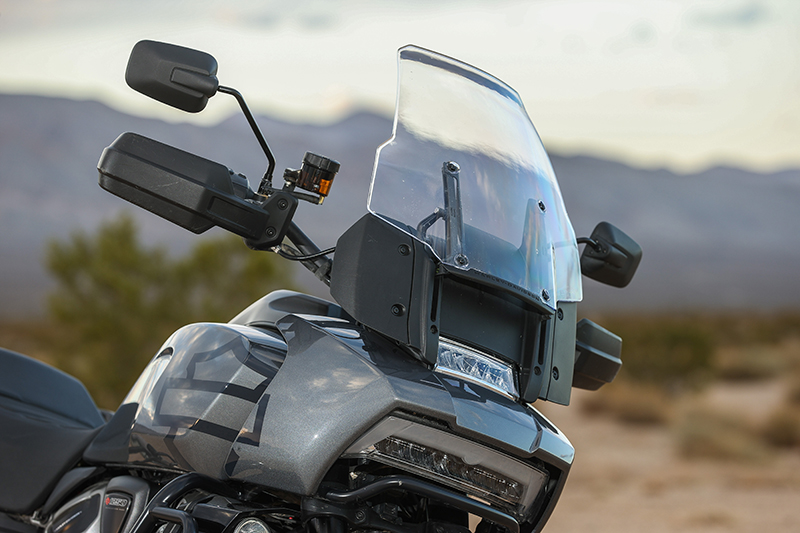
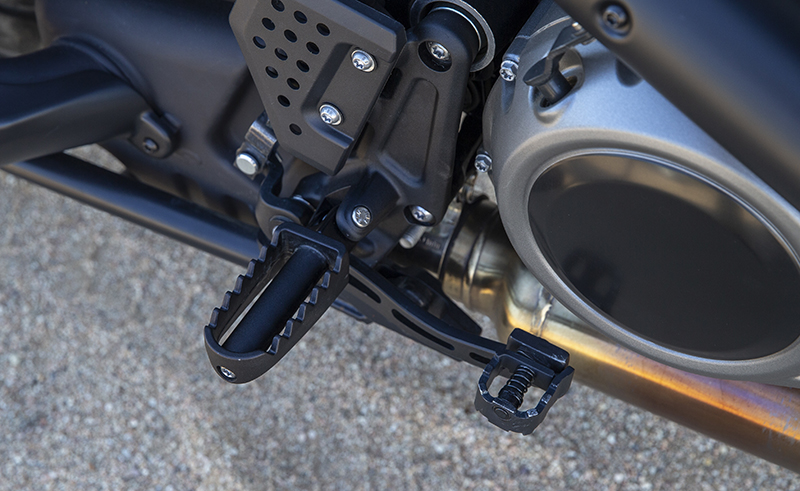
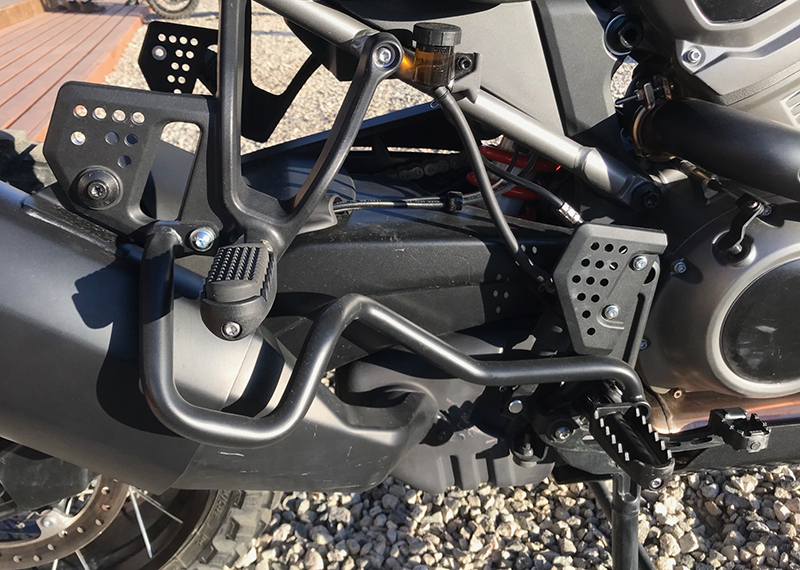
While other ADV bikes provide multiple seat choices and position settings, one of the most interesting distinctions of the Pan America is the Adaptive Ride Height (ARH) option available on the Pan America Special ($1,000). The factory ARH option lowers the rider’s seat height when at a complete stop, providing an extra inch of “feet on the ground” reach for the shorter inseam motorcyclist yet ensuring sufficient ground clearance required when underway off road. This is important as it addresses one of the common barriers to entry for women with off-road bikes which are usually very tall to ensure adequate clearance of rocks and other obstacles.
Check out this short video clip of the ARH lowering the suspension on the Pan America 1250 Special to make it easier for this rider to reach the ground at a stop.
I found the action of lowering the height quite smooth and unnoticeable except when getting on the bike while the side stand is still down. My tip … turn the ignition on before getting on the bike if you’d like that extra inch of lowering before you mount the motorcycle.
As with other Harley-Davidsons, the Pan America offers three seat options: the standard, the Tallboy Solo ($249), and the Reach Solo ($249). Each seat can be placed in either the low or high position giving another inch of customization for the rider. With ARH and in an unladen condition (no rider or luggage on the bike) the Pan America’s seat height can range from 31.7 inches to 34.7 inches.
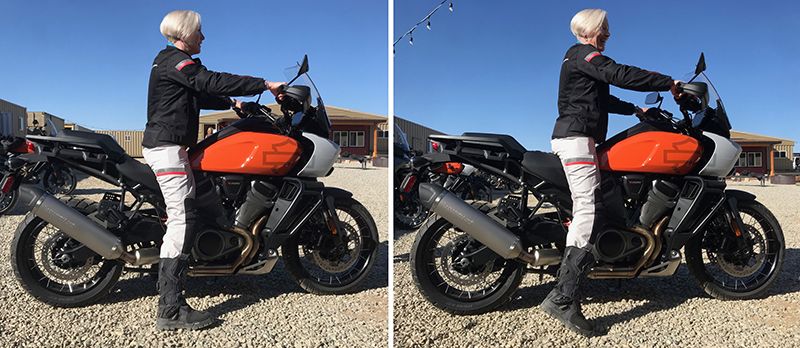
Performance
Once underway, I quickly appreciated the next thing that makes the Pan America distinct from others in the category … the quick and powerful throttle response of Harley-Davidson’s all new Revolution Max 1250cc V-twin motor designed specifically for the Pan America. Harley says the liquid-cooled motor provides 150 horsepower at 9,000 rpm and redlines at 9,500 rpm. I found the power delivery very smooth throughout the powerband, yet it did give off a bit more vibration than I’ve experienced on other ADV bikes. 150 hp certainly gives the 565-pound Pan America a lot of great power to work with.
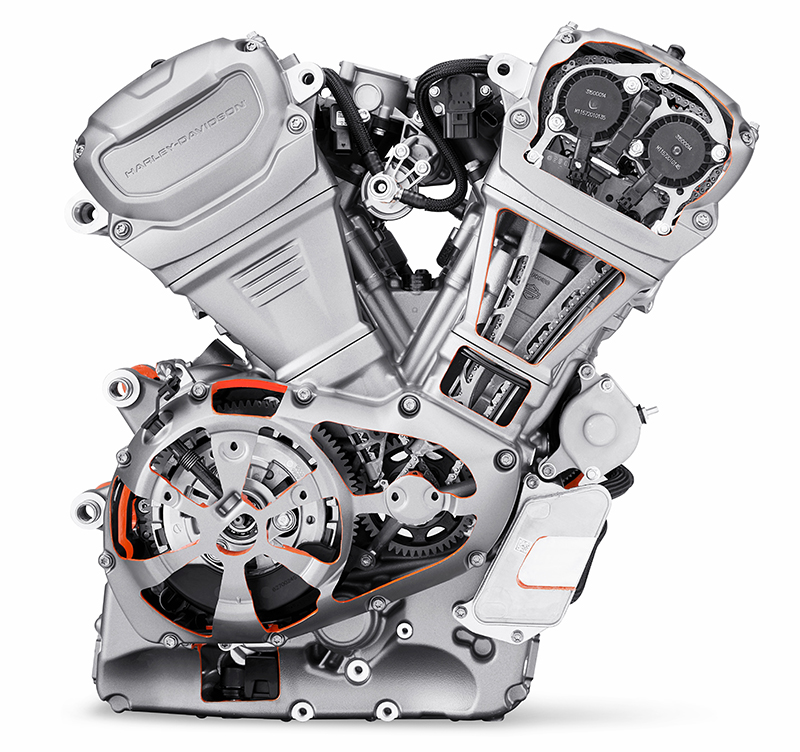
Something traditional Harley-Davidson riders will need to become accustomed to with the Pan America is the chain final drive. Harley chose to use a chain in order to reduce the chance of belt damage caused by rocks and debris picked up off-road. While the chain drive is definitely a great selection for off-road riding, it will require lubrication and adjustment on a regular basis to ensure the chain is properly maintained.
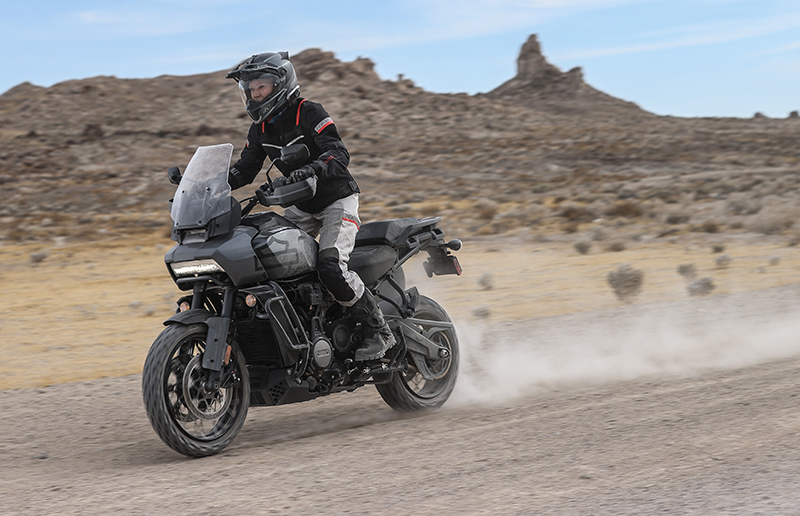
Like many modern adventure bikes, the Pan America offers multiple ride modes (Road, Sport, Rain, Off-Road and Off-Road Plus) to provide the rider flexibility in power delivery, braking, and suspension for variable road conditions. Road mode is very comfortable for general street and highway riding, while Sport mode offers a precipitous increase in throttle response when ramping it up for the twisties. Similarly, Rain mode provides a distinct dampening of horsepower which is helpful in slick conditions on asphalt or when encountering deep sand off road.
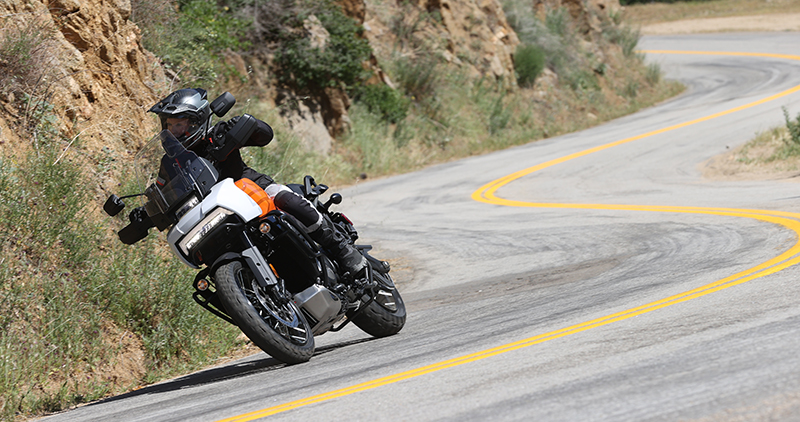
Four of the modes are easy to toggle through and select while riding by pushing the “mode” button on the right hand control cluster. As a safety measure, however, Harley requires the bike to be at a complete stop for the rider to select the Off-Road Plus mode; a mode which significantly reduces the traction control provided to the rear wheel and turns off the anti-lock braking system (ABS), allowing the rider to accomplish a “skid turn” on dirt, for example. The bike automatically resets the mode from Off-Road Plus to Off-Road when the ignition is turned off, so the rider has to remember to reselect Off-Road Plus after every water or photo break or has to make a second stop to put the bike in that mode.
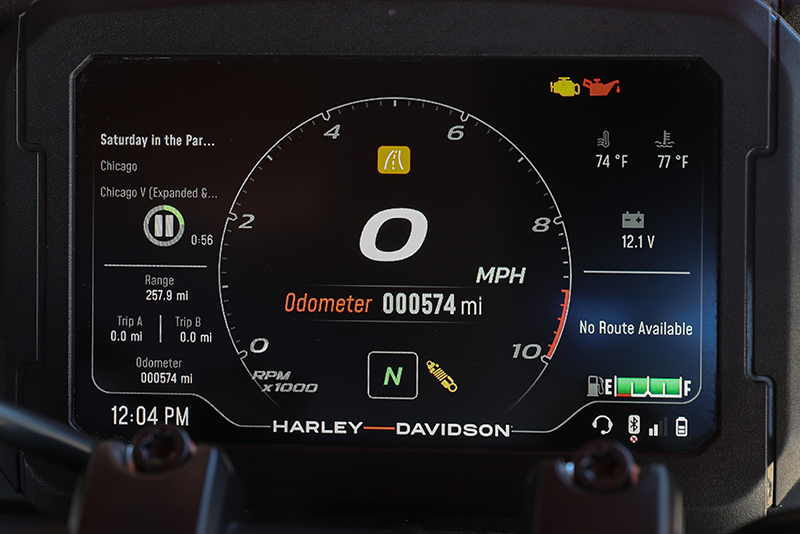
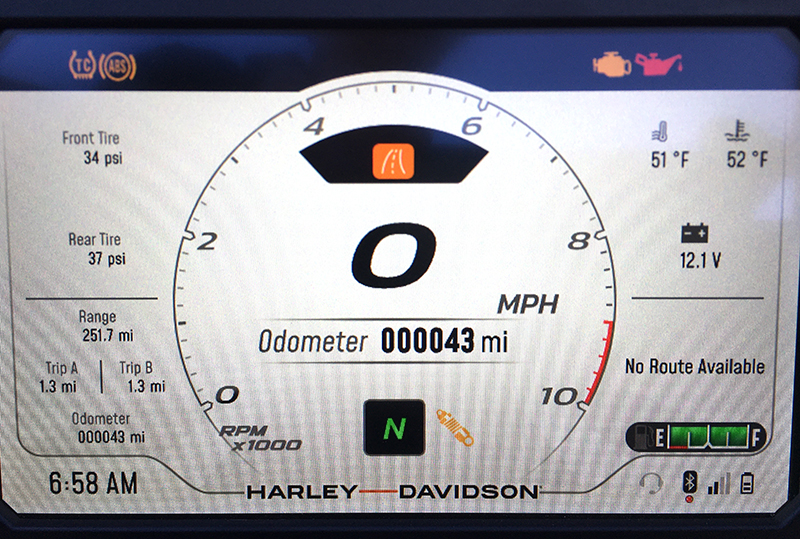
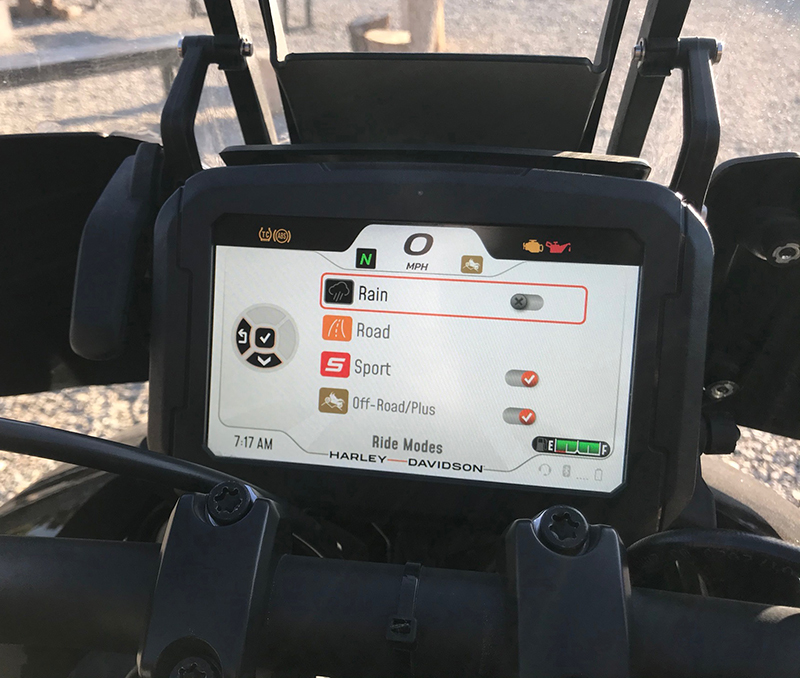
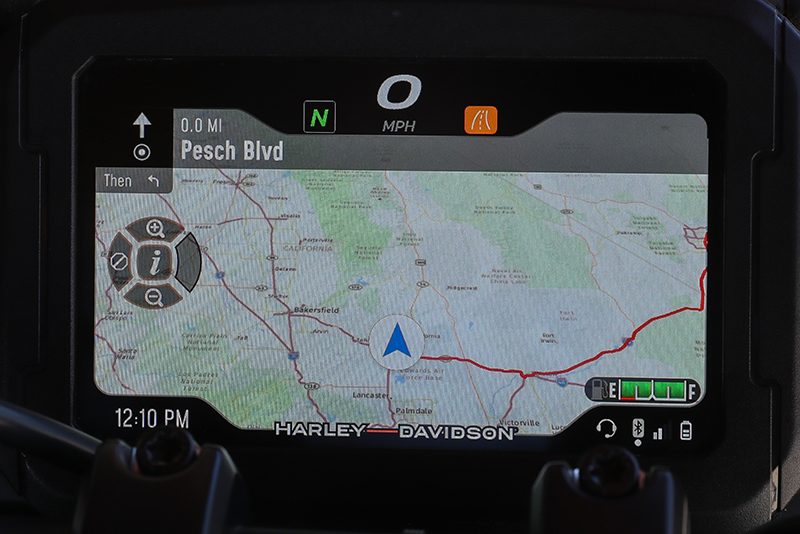
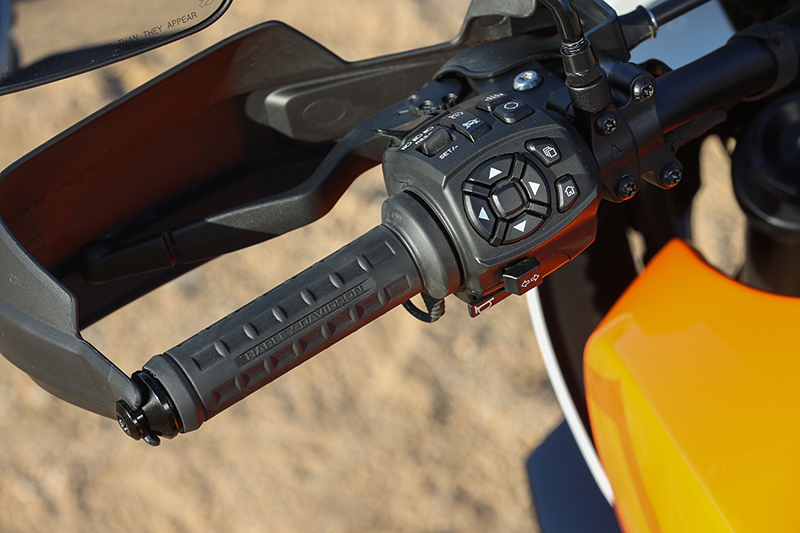
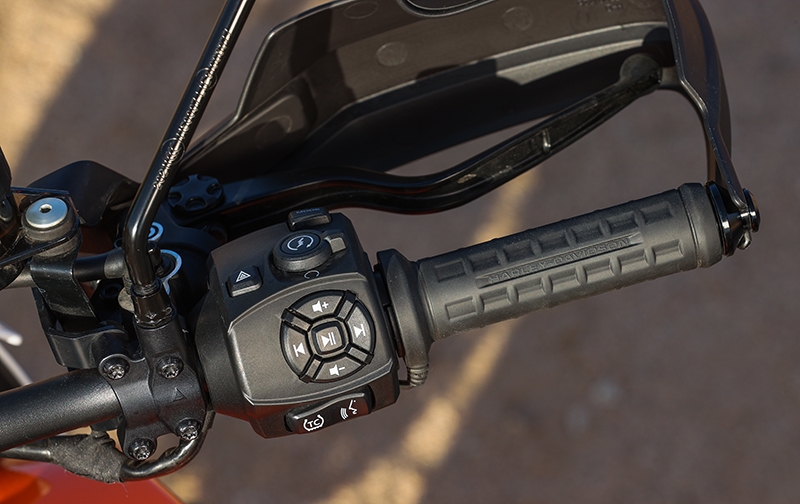
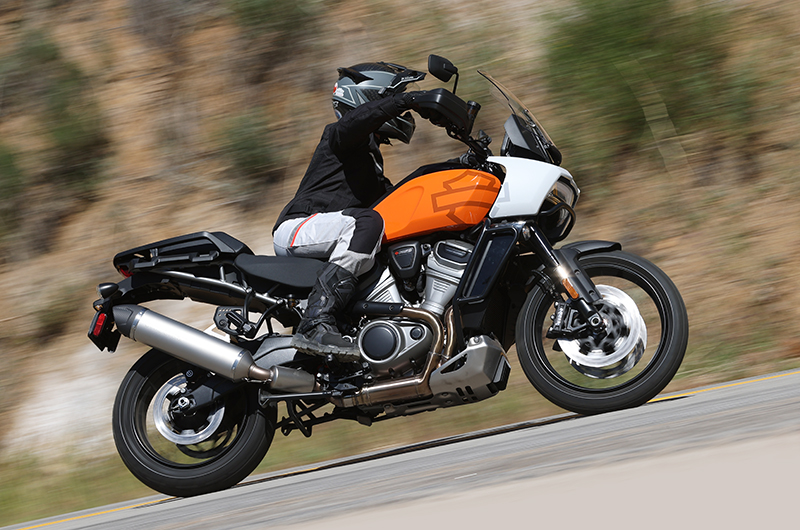
Harley worked with Michelin to develop their co-branded Scorcher Adventure tire to ensure the rider has a comfortable experience both on and off the asphalt. The more diehard dirt rider will prefer a full knobby tire like the Anakee Wild’s on the Pan America Special.

Regardless of what motorcycle you’re riding, the proper application of both the front and the rear brakes is incredibly important. Braking gently and smoothly becomes even more paramount when riding off-road due to limited traction. If too much front brake is applied, for example, the front end can wash out causing the bike to go down. But when used properly the front brake (with its two large brake rotors) is actually the most effective in slowing the bike. Some late model motorcycles, including the Pan America, use linked braking which will apply various amounts of rear brake even when the rider is only using the front brake lever. I found the Pan America’s brake system, which provides more linking under heavier braking and less under light braking conditions or low speeds, very smooth and confidence inspiring even in the trickiest of fine gravel.
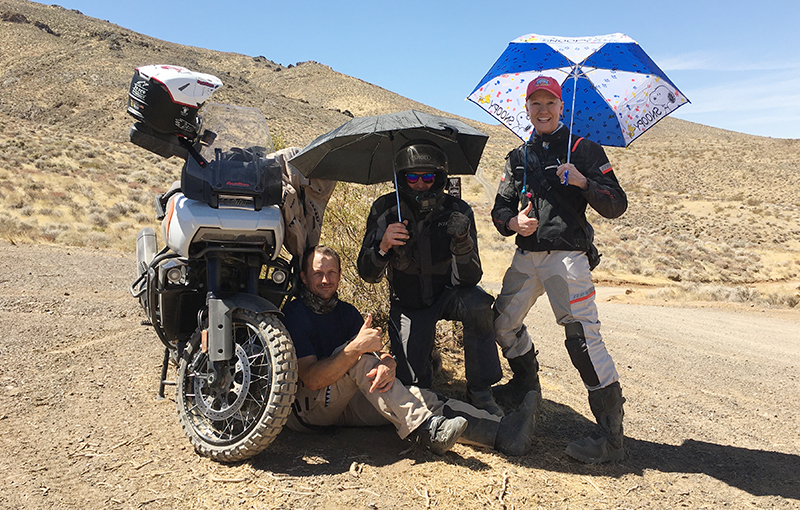
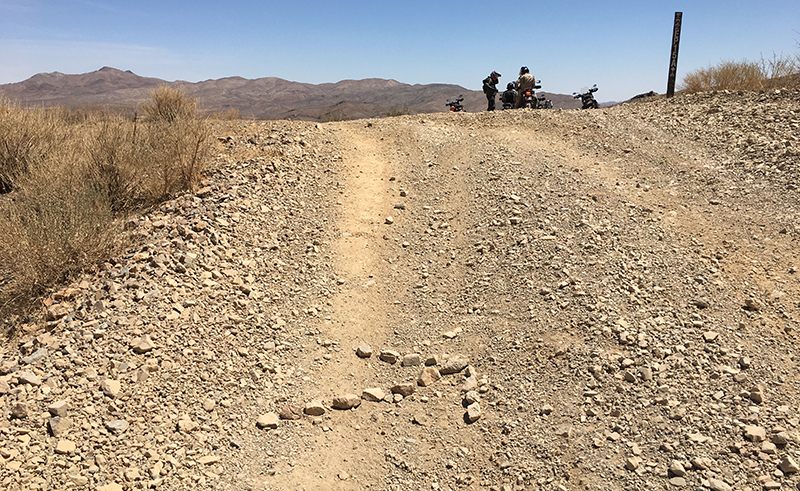
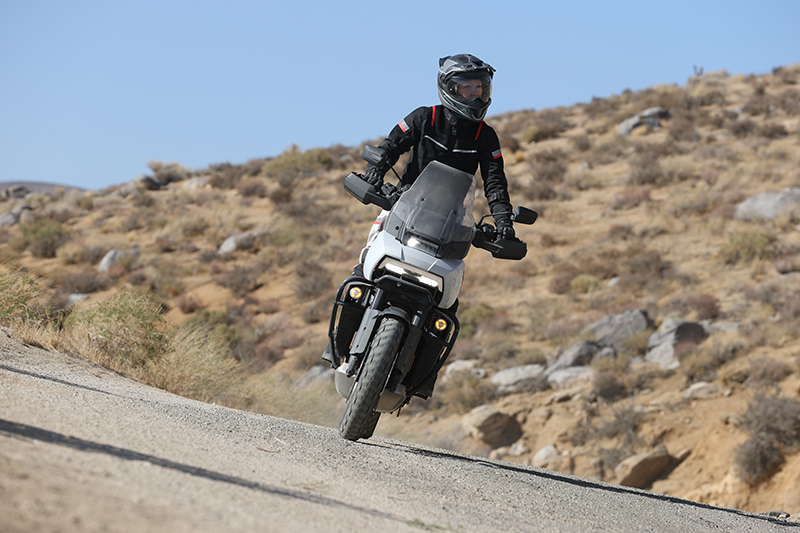
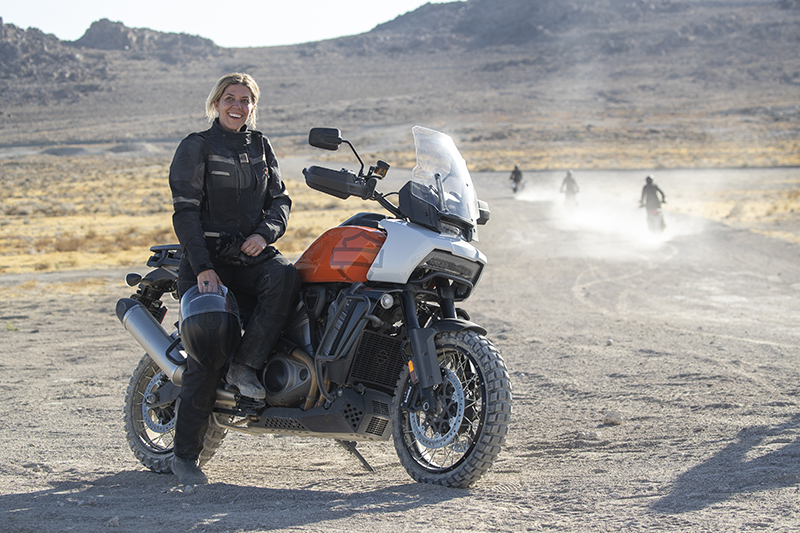
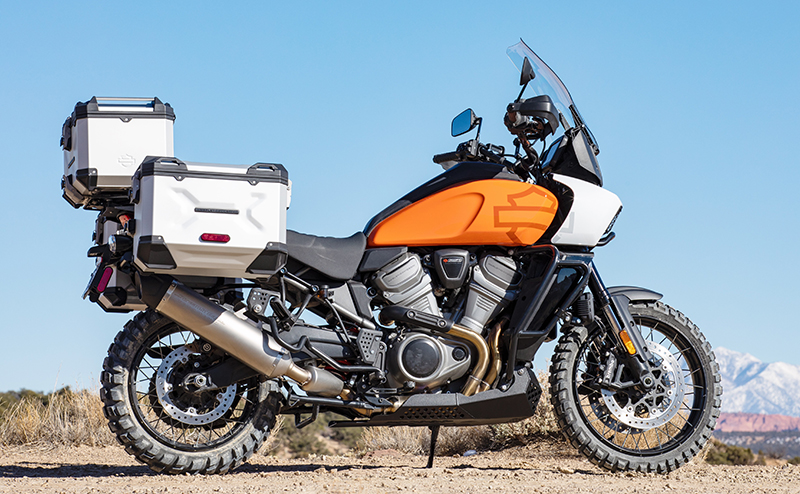
Want to be one of the pack? Experience the Pan America first hand through Harley-Davidson’s Pan America 1250 demo tour stopping at 14 locations across the country from May through October, 2021.
Specs At A Glance: 2021 Harley-Davidson Pan America 1250 / Pan America 1250 Special
Engine size: 1250cc
Seat height: 31.7 inches to 34.7 inches
Fuel capacity: 5.3 gallons
Wet weight: 534 pounds / 559 pounds
MSRP: $17,319 /$19,999
WRN Recommendation: While definitely not a “beginner’s bike,” the Pan America’s Adaptive Ride Height, linked braking, and multiple dirt modes make it a great bike for the experienced road rider who is learning to be just as comfortable off the asphalt as on it. We also recommend it for the more experienced adventure rider who is ready to add the 150 horsepower of the Revolution Max motor to their excursions.
